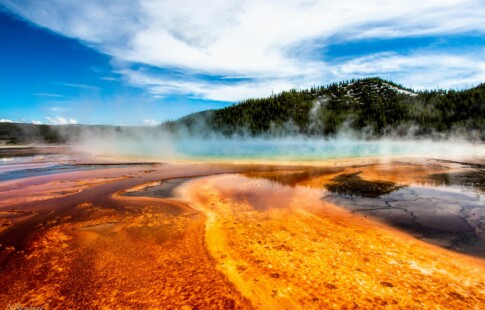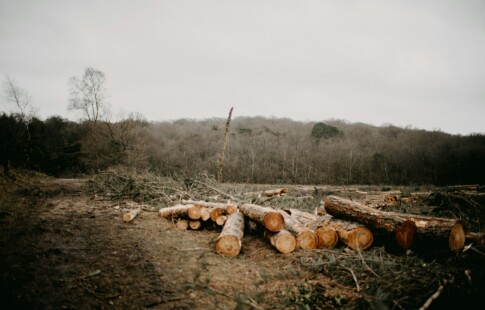
What Technology Predicting Natural Disasters Means for Disaster Preparedness
We are reader-supported. When you buy through links on our site, we may earn affiliate commission.
Natural disasters are becoming more prevalent and more destructive with each passing year, thanks to climate change and the rising global temperature. Hurricanes are getting larger and more powerful. Droughts are lasting longer, which encourages both water scarcity and wildfires. There are many other disasters we don’t hear about on the news unless they impact human life. New technology predicting natural disasters may be able to predict these events more accurately than ever before. What does this new predictive technology mean for disaster preparedness?
Climate Change and Technology Predicting Natural Disasters
We’ve been talking about climate change more and more in recent years, especially since we have a deadline now — 12 years to reduce the planet’s CO2 emissions by 45%, hoping to become a zero-emissions species by 2050. The increase in global temperature is already beginning to affect the world around us, making natural disasters like hurricanes and droughts even more dangerous.
The increase in the planet’s surface temperature means oceans are getting warmer. Warm water feeds hurricanes, making them larger and more intense. The 2017 hurricane season is a prime example of this phenomenon, with three massive storms — Harvey, Irma and Maria — all striking land within a couple of weeks of one another, and each causing millions of dollars in damage. We may get fewer overall storms, but those that do form will be more intense and more dangerous than any in history.
The devastating Camp Fire in Northern California is another example of this link between climate change and natural disasters. The extreme drought conditions turned the area around Paradise, Calif., into a powder keg, and when it finally lit, it burned for two weeks and killed 85 people.
How can technology help us predict these disasters and respond to them more efficiently?
The Internet of Things and Disaster Response
The Internet of Things, or IoT, is helping emergency responders react to disasters as they occur. Communication is often a problem in disaster zones, as most people rely on their cell phones to keep in touch with friends and family. Very few homes still have traditional landlines that operate when the power goes out. Most service providers have switched to VoIP, which uses the internet to place and receive calls, and doesn’t work if the power fails.
One of the most useful IoT technologies in disaster situations is LoRa communications technology. These low-power, wide-area networks continue to function even if cell towers have fallen. They can work even without being hooked into the local communication infrastructure. LoRa is already in use in underdeveloped countries to combat poaching and assist with animal conservation. Humans aren’t the only ones natural disasters affect. In 2006, after Hurricane Katrina hit New Orleans, Congress passed the Pets Evacuation and Transportation Standards Act to ensure people could evacuate with their pets or get reunited with them after an evacuation.
AI Disaster Predictions
We’ve got more than a century of detailed disaster data, tracking hurricane paths and earthquake intensities and even volcanic eruptions and the signs that lead up to those events. Artificial intelligence and machine learning can take this data, analyze it and use that information to predict when new disasters might occur.
These systems can “learn” to predict everything from earthquakes and volcanic eruptions to floods, hurricanes and tornadoes. Scientists already collect detailed data as these events occur. AI merely takes this information to the next level. With enough data, a predictive AI system can accurately forecast future events.
The applications for this technology are numerous. Google is working on an AI platform to predict the location and likelihood of floods in monsoon-prone India. From there, the system can warn those who might need to evacuate to higher ground.
Looking Forward and Surviving Climate Change
No matter how we look at it, climate change is here to stay. We can prevent it from becoming irreparable, but the best-case scenario is a global temperature increase of one and a half degrees Celsius. These increasingly dangerous natural disasters are going to become a standard part of life. Technology can help us predict when and where they might strike, and how dangerous they might be, but we will need to make changes to our very infrastructure to survive the way the planet is changing.
Hurricanes will get more powerful. Tornadoes will get larger. Earthquakes will get more severe, and wildfires will tear unchecked across the landscape. There’s nothing we can do to prevent these disasters from becoming more dangerous, but we can use technology to anticipate when and where they might happen. Even a little warning can give residents the time they need to stock up on supplies, retreat to a shelter or evacuate.
Share on
Like what you read? Join other Environment.co readers!
Get the latest updates on our planet by subscribing to the Environment.co newsletter!
About the author

Jane Marsh
Starting from an early age, Jane Marsh loved all animals and became a budding environmentalist. Now, Jane works as the Editor-in-Chief of Environment.co where she covers topics related to climate policy, renewable energy, the food industry, and more.





